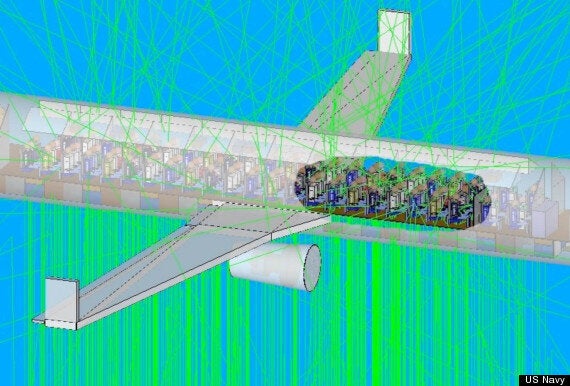The US Navy is to investigate the mysterious - and potentially dangerous - phenomenon of 'dark lightning', which could be exposing air passengers to powerful bursts of radiation during storms.
Lightening is caused by the interaction of charged particles in the atmosphere, created during violent winds.
When lightning strikes, the vast amounts of electrical energy stored in the clouds are released in sharp, intense bursts - which, helpfully, we can see. So far, so familiar.
But back in 2010 Nasa discovered - by accident - that it's not just visible electrical energy which is created and released in this way, but also intense bursts of radiation.
This so-called 'dark lightning' - consisting of surprisingly powerful gamma rays more usually released by stars in deep space - can also be generated and sent out in wide, strong bursts during a storm.
Discovered by the Fermi Gamma-ray Space Telescope, Nasa thinks these flashes are potentially dangerous. If one struck an aeroplane in mid-air, it's possible that passengers could be exposed to the maximum safe lifetime dose of ionising radiation in an instant.

Above: Simulation of a Boeing 737 struck by dark lightning.
Without radiation detectors, it would be impossible to tell if a plane had been hit - passengers wouldn't see or even feel anything.
Fortunately dark lightning appears to be rare - about one burst per thousand regular strikes of lightning. But the US Navy wants to look into it further, and has launched a study to nail down just how dangerous dark lightning might be.
The US Naval Research Laboratory has said it will use its SoftWare for the Optimisation of Radiation Detectors (SWORD) to model the phenomenon in an effort to understand how powerful and regular they might be. They will use the Calorimeter aboard Fermi to locate flashes of dark lightning, and then calculate the radiation dosage.
The team is also building detectors that it can send up on high-altitude balloons, to further test the gamma-ray bursts first hand.